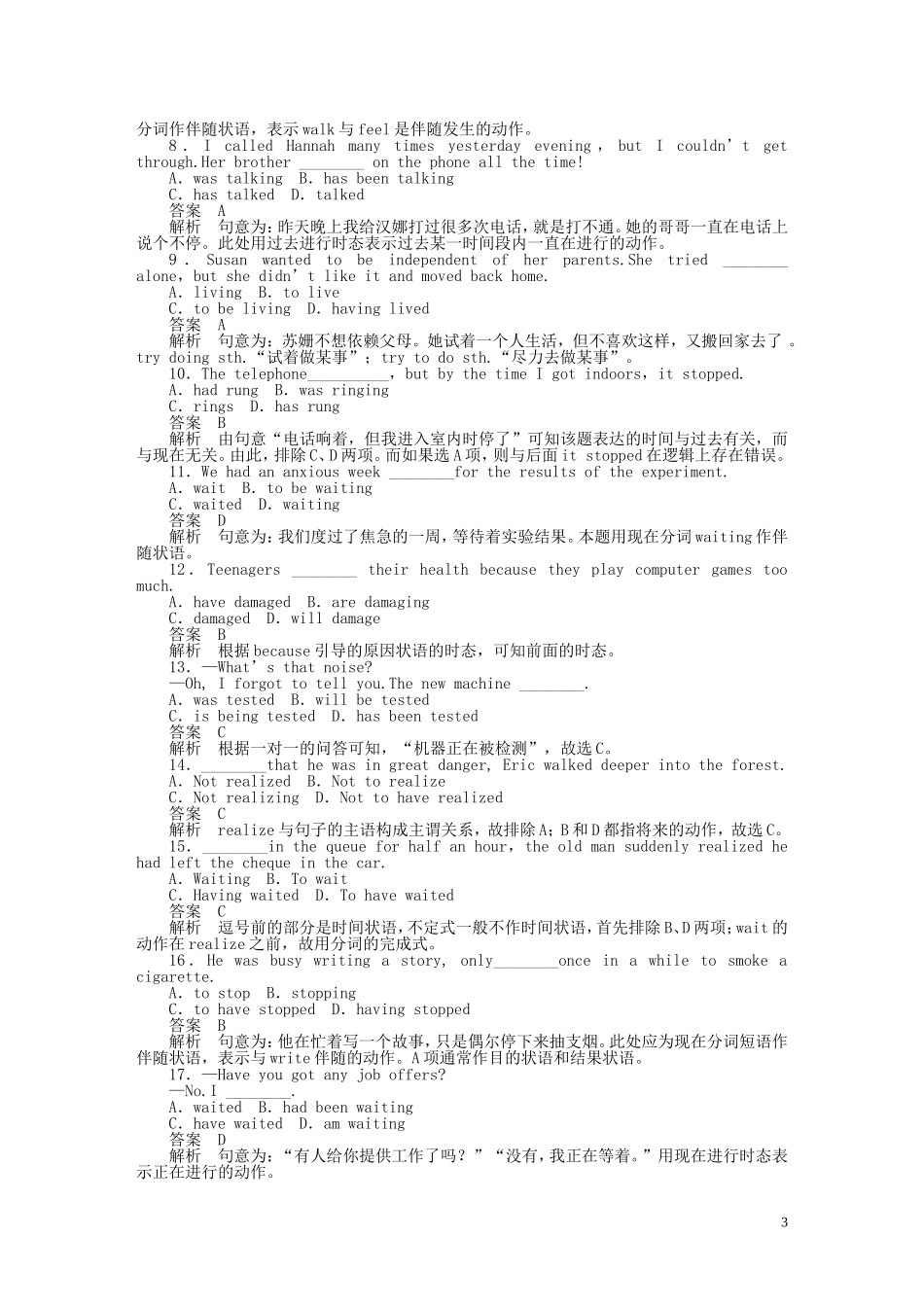Period Two Learning about Language 现在分词(v.ing)作状语v.ing 形式或 v.ing 短语作状语往往修饰谓语动词表示的动作,相当于相应的状语从句或并列句。1.表示时间,作时间状语,相当于时间状语从句。Walking along the street,I met my old classmate.(=While I was walking along the street,I met my old classmate.)我在街上走的时候碰到了老同学。Turning on the light=(When he turned on the light),he was surprised to see his son lying on the floor.他打开灯,惊讶地看见儿子躺在地上。Entering the office( = As soon as I entered the office) , I picked up the telephone and called Bob.我一走进办公室,就拿起听筒给鲍勃打电话。when/while+动词的ing 形式强调其表示的动作和谓语动词动作同时发生。Look out for cars when(you are) crossing the street.过街时注意车辆。Don’t reach sideways while(you are) standing on a ladder.站在梯子上时,不要侧着身子伸手去拿东西。2.表示原因,作原因状语,相当于原因状语从句。Being too young(=As he was too young),he couldn’t join the army.因为太年幼,他不能参军。Not knowing how to get there(=As I did not know how to get there),I had to ask the way.因为不知道如何到那里,我只得问路。3.表示条件,作条件状语,相当于条件状语从句。Driving too fast(=If you drive too fast),you will damage the car.如果你开车太快,你会把车子弄坏的。Having more time(=If I have more time),I will do the work much better.如果我有更多时间,我会把工作做得更好。注意:表示条件时主要句子中的谓语动词往往用将来时或带有情态动词。4.表示伴随状况或行为方式,这种用法没有相应的状语从句可以代替,但可以用并列复合句或两个简单句代替。Thousands of students stood there,watching.(=Thousands of students stood there and watched.)成千上万的学生站在那儿观看着。(习惯上 stand,sit,lie 等表示主要行为须作谓语动词。应说 stand watching,sit thinking,lie reading 等,不宜说 watch standing,think sitting,read lying 等)They came into the classroom,singing a...


